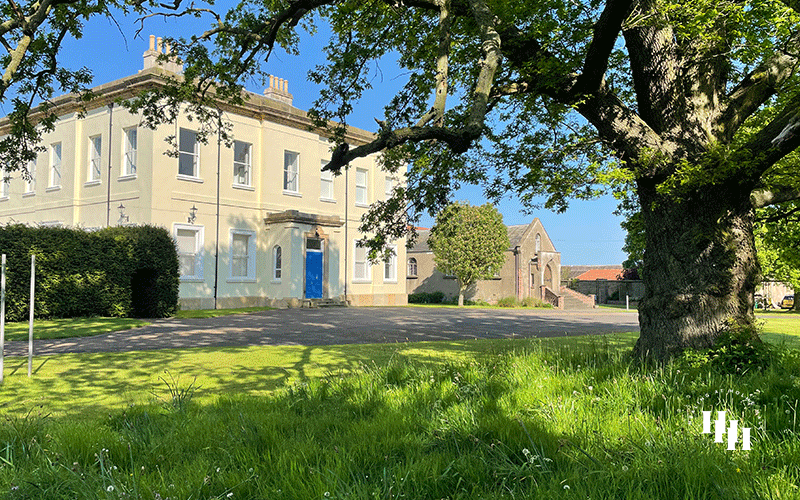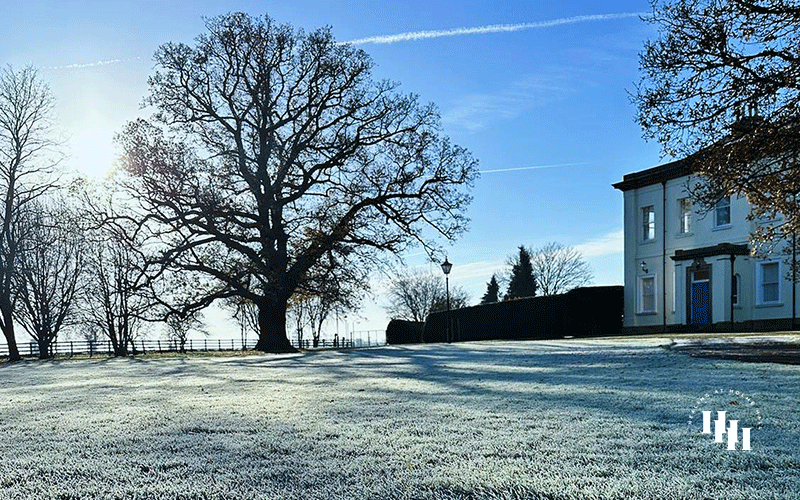History of Holme Hall
Holme Hall is a grade II* listed building – this means that its architecture is considered to be of great historical importance, so original features must be preserved. Built around 1720 to 1730, the stunning hall and gardens offer a unique elegance to its visitors, with fine Georgian features. This 18th century country house was designed by William Wakefield and built for the 4th Baron Langdale.
The celebrated Architect, John Carr, added a chapel to Holme Hall in 1766. The Chapel was regarded as highly important as an early private chapel, built before the first Catholic Relief Act. It was extended in the 1930’s. Unfortunately, a fire in the1940’s destroyed some of its key features, however a fine Corinthian altarpiece remains plus Victorian coloured glass windows. The interior is dominated by the large classical altarpiece with paired Corinthian columns and a marble High Altar.
The land on which Holme Hall stands originally belonged to Sir William Constable, who was Member of Parliament for Yorkshire in 1626. In 1630 he was forced to sell most of his lands. The land was purchased by Marmaduke Langdale, whose family had been significant landowners in Yorkshire since the 14th century.

Holme Hall was then passed down from the 1st to the 5th Baron, who was survived only by daughters. Without a direct male heir, the Holme Hall Estate passed to the 5th Baron’s grandson the Honourable Philip Henry Joseph Stourton, son of Mary Langdale, one of the 5th Baron’s two surviving daughters. Born on 14 January 1793, Philip became a Justice of the Peace and Deputy Lieutenant for the East Riding. He married Catherine Howard on 28 July 1829 and died on 3 August 1860.
Holme Hall passed next to Henry Joseph Stourton who was born on 4 July 1844. Henry’s younger daughter, Amy Mary Josephine Stourton, sold the Hall to The Duke and Duchess of Norfolk, who had a family home near Selby. The Duke of Norfolk is to this day one of the most influential Roman Catholics in the United Kingdom. Holme Hall was donated to the Catholic Diocese of Middlesborough for use as a religious building and church.

By 1910 Franciscan nuns lived at Holme Hall, and in 1929 it became the Convent of the Oblates of the Assumption. This Catholic order developed in the late 19th Century and devotes an hour each day to silent devotion. There remains a small graveyard for some of the Hall’s residential nuns and staff in the extensive grounds.
In 1981, Holme Hall became a residential care home for people with neurological conditions. Owned by Sue Ryder Care, a national charity, Holme Hall was registered to provide care and support for up to 40 adults. They provided services for a range of neurological conditions including Brain Injury, Multiple Sclerosis, Huntington’s Disease, Cerebral Palsy, Stroke and Parkinson’s Disease. Following an inspection in March 2017 the Care Quality Commission noted “We found that people received compassionate care from kind staff and that staff knew about people’s needs and preferences.”

